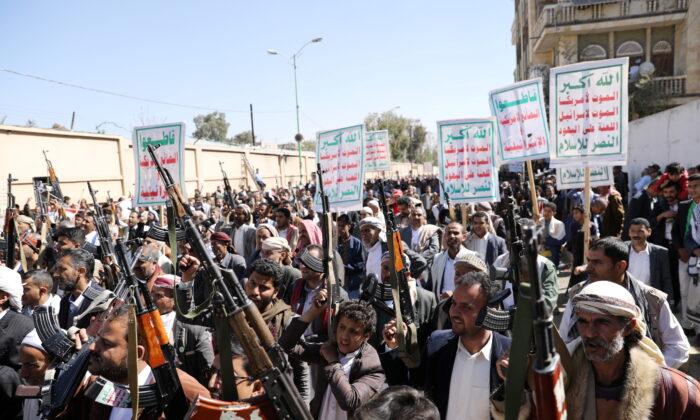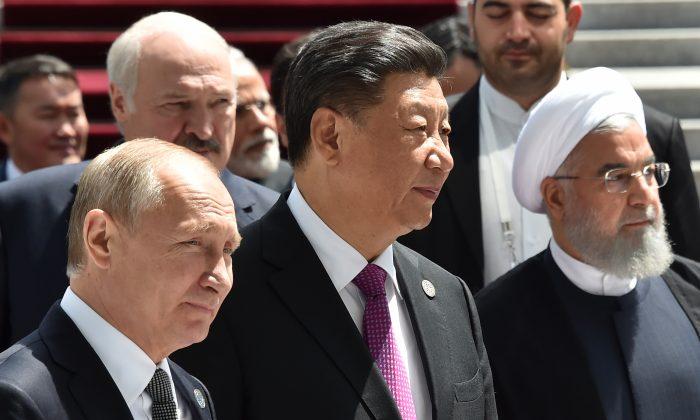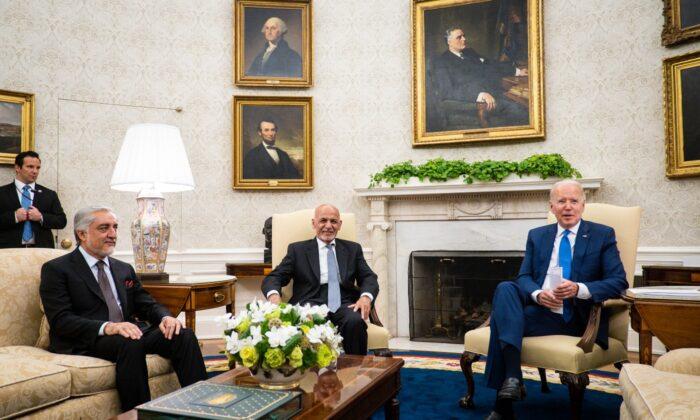What a difference a month makes when informed, brave, and bitterly resentful human beings decide to revolt against an oppressive dictator.
As I write this column, in mainland China’s major cities protesters are attacking the regime’s hazmat-suit-clad COVID-19 lockdown enforcers. In Beijing and Chengdu anti-lockdown demonstrations rock China’s premier university campuses.
Why? For the demonstrators, the communist government’s zero-COVID policies have become intolerable acts—literally death sentences when citizens locked in buildings die in fires.
The Chinese Communist Party (CCP) demands Chinese citizens get a COVID-19 clearance code to buy groceries, use a public restroom, and take a walk until the CCP says otherwise. Protest and go to jail. Or starve. Or die in a fire because the cops won’t let you out.
China’s informed citizens have narrative savvy. Throughout the country protesters—some wearing surgical masks—stand before cellphone cameras and raise blank sheets of white paper.
Right—white empty space. To paraphrase Cool Hand Luke, sometimes nothing is a real cool message. The blank sheets simultaneously satirize and defy the CCP’s malignant state censorship.
My translation of the blank: “We Chinese citizens say nothing yet you CCP tyrants fear our thoughts.” The empty page attacks the CCP’s systemic truth denial.
So, across China rioters are calling for Xi Jinping’s removal. By name. The dictator by name.
Yet just a month ago Xi had the Chinese Communist Party crown him emperor for at least another decade.
Xi’s spin: With him at the helm China would create a 21st-century “Zhongguo.” In poetic English the word usually translates as “middle kingdom,” but quibblers maintain a more literal and accurate translation is a China that is “everything under the heavens”—a China at the center of all four cardinal directions on the compass.
According to Xi, China under his leadership was creating an ideological alternative to the so-called American “liberal international order.”
Xi’s propaganda: China’s authoritarian governance model works, and China’s economic success proves it works. China will run the world.
However, scrutiny by informed and honest folks reveals the LIO is an ambiguous strawman akin to 20th-century Soviet propaganda damning democracy and free enterprise.
My take: Xi plagiarized Cold War Russian propaganda.
Does authoritarian governance work? The mass demonstrations and blank pages say otherwise.
News outlets have videos of protesters blocking police vans and confronting riot cops. The instant comparison is the June 1989 Tiananmen Square “tank man,” the gaunt fellow who stood in front of a People’s Liberation Army (PLA) tank and, for a moment, stopped it.
Fact: the current demonstrations are the first widespread mass protests against CCP rule since Tiananmen.
In 1989, China’s economic reforms were giving the Chinese people a taste of prosperity. In Beijing’s Tiananmen Square, the CCP heard free-market-spurred calls for political reform. Most protesters didn’t oppose CCP rule, but they wanted a more open government.
However, one group in the square made a foam and papier-mache statue it called the Goddess of Democracy.
The author of China’s market reforms, Deng Xiaoping, saw that as a challenge to CCP rule. He ordered the PLA to attack.
How many Chinese citizens were murdered? Two thousand is a common figure. Other sources say 10,000.
But ever since the Tiananmen slaughter, the CCP has been riding The Tiananmen Tiger.
The CCP wants foreign investment in China’s economy but rejects participatory decision-making that might challenge party authority. The tension between party authority and free-market mechanisms is why the CCP attempts to “guide” public opinion (censor speech), crush dissent, and resist demands that it share governmental power. I call it China’s Great Dilemma, a recipe for mass bloodshed.
A closing thought: As China modernized, the United States bet that political liberalization would follow. International integration would mellow and moderate China’s Communists. But it didn’t happen, did it?





